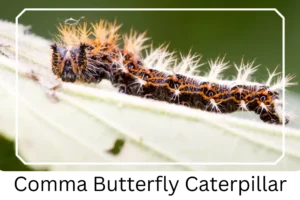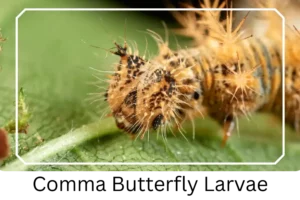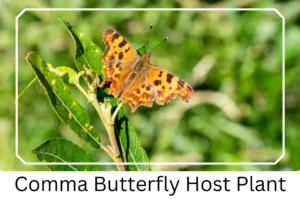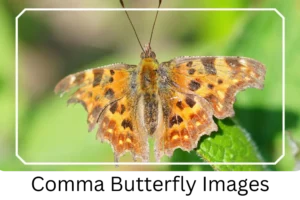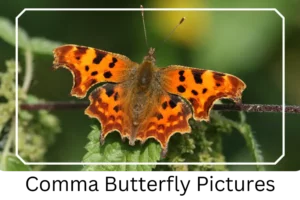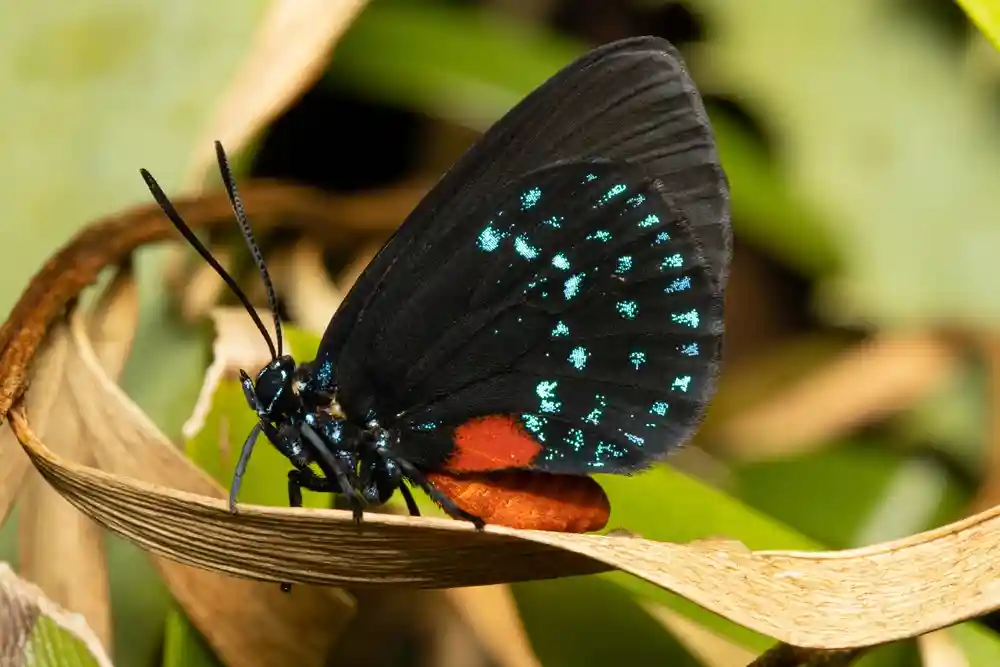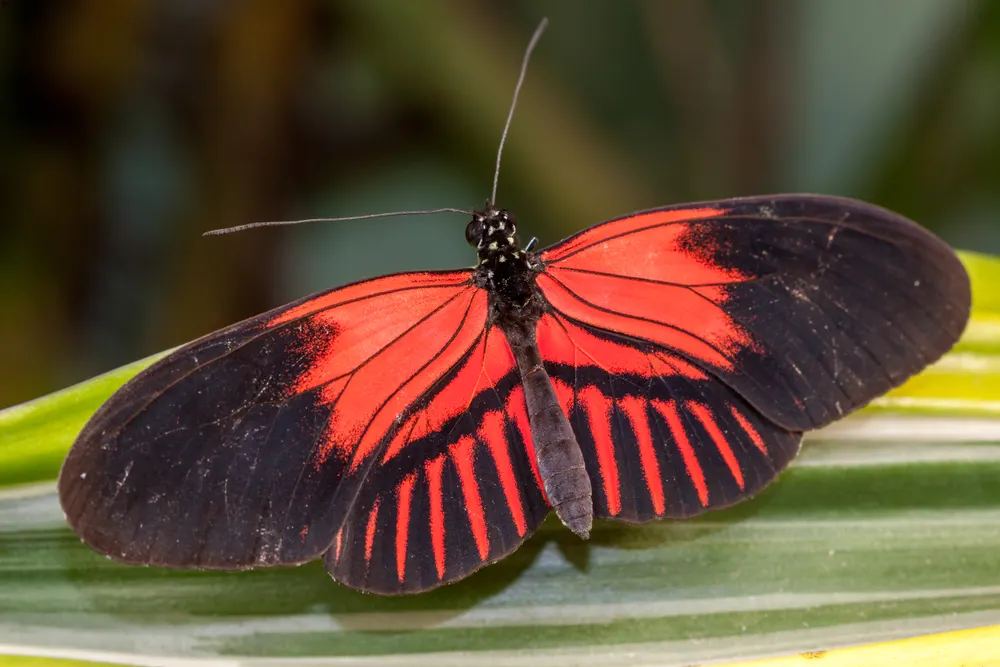Comma (Polygonia c-album)
Comma butterflies, a striking specimen of the anglewing family, have captured the admiration of many with their unique markings and survival tactics. These butterflies boast an impressive distribution across three continents and have shown remarkable resilience, bouncing back from a significant population decline in the 20th century to now thrive, particularly in Southern Britain, where their habitat range continues to expand.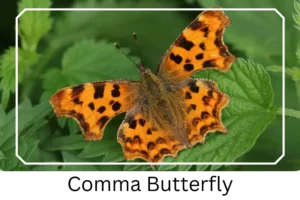
Scientific Classification
- Family: Nymphalidae
- Genus: Polygonia
- Common names: Comma butterfly
- Scientific Name: Polygonia c-album
Overview
The journey of the Comma butterfly, from a cleverly disguised caterpillar to a master of camouflage as an adult, is a fascinating story of adaptation and survival. This butterfly’s lifecycle stages—caterpillar, pupa, and adult—feature unique characteristics that protect it from predators. With a lifespan that typically spans about a month for adults, the Comma butterfly has specific host plants for its eggs and a diet that helps it thrive in its natural habitat.
Description and Identification
Caterpillar
The larvae of the Comma butterfly are easily identifiable by their spiny bodies adorned with white, black, and orange patterns, mimicking bird droppings to deter predators. In the final larval stage, the white color fades, enhancing their camouflage.
Pupa
Mimicking dead foliage, the chrysalis of the Comma butterfly is a masterpiece of natural disguise. It hangs upside down from trees, featuring a green and pinkish-brown hue adorned with gold and silver spots, blending seamlessly with its surroundings.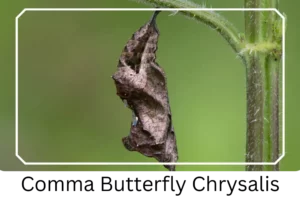
Adult Butterfly
Adult Comma butterflies exhibit sexual dimorphism, with females being notably larger than males. The dorsal sides of their wings showcase a brownish-orange color with distinctive black marks when unfolded. In contrast, the folded position reveals a brown and black palette that resembles a dead leaf, highlighted by a white curve reminiscent of a comma. This unique feature not only lends the butterfly its name but also serves as an effective defense mechanism during hibernation, as their yellow-brown coloration merges perfectly with dead leaves.
Sexual Dimorphism: Females larger than males.
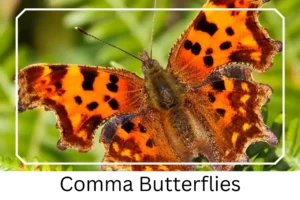
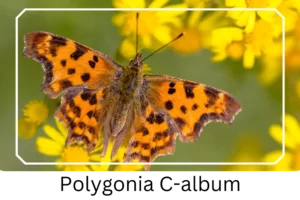 Color and Appearance: Brownish-orange with black marks when wings are unfolded; brown and black resembling a dead leaf when folded.
Color and Appearance: Brownish-orange with black marks when wings are unfolded; brown and black resembling a dead leaf when folded.
Average Wingspan: 2.2-2.4 inches.
Flight Pattern: These butterflies exhibit a fluttering flight pattern, which, combined with their coloration, aids in evading predators.
Eggs
Laid individually on host plants, the eggs of the Comma butterfly undergo a fascinating transformation from green and spherical to yellow, and finally to grey before hatching, signaling the start of a new lifecycle.
Quick Facts | |
| Distribution | Asia, Europe, and North Africa |
| Habitat | Lightly forested areas, woodlands, gardens |
| Lifespan of Adults | Around a month |
| Host Plants | Common nettle, wych elm, pussy willow, gooseberry, downy birch |
| Adult Diet | Tree sap and rotten fruit |
How to Identify Comma?
Identifying a Comma butterfly involves looking for several distinctive features. Firstly, observe the wings’ color and pattern: unfolded wings reveal a brownish-orange hue with black marks, while folded wings mimic the appearance of a dead leaf, complete with a unique white ‘comma’ mark. Size is another clue; with an average wingspan of 2.2-2.4 inches, they are moderately sized. The caterpillars and eggs of the Comma butterfly are also unique, with larvae resembling bird droppings and eggs that change color over time. Spotting these butterflies often requires a keen eye, as their camouflage skills are exceptional, especially during hibernation.
Did You Know?
- The Comma butterfly shares a resemblance with the Question Mark butterfly, another member of the Nymphalidae family named for punctuation.
- There are nine recognized subspecies of the Comma butterfly, each adapted to different habitats and regions.
- Unlike many butterflies, the Comma can hibernate and survive the winter, emerging in spring to continue its lifecycle.
Conclusion
The Comma butterfly (Polygonia c-album) is not just a marvel of nature’s design but also a testament to the resilience and adaptability of wildlife. From its cunning larval stage to its sophisticated adult camouflage, the Comma butterfly navigates its environment with remarkable finesse. Understanding and appreciating these creatures enriches our connection to the natural world and underscores the importance of conserving their habitats for future generations to enjoy.
Comma Butterfly Pictures

Scientific Classification

- Family: Nymphalidae
- Genus: Polygonia
- Common names: Comma butterfly
- Scientific Name: Polygonia c-album

